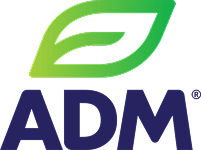Optimize production operations with production planning software
Streamline your manufacturing operations across sites, optimizing within critical constraints such as capacity, tools, inventory targets and shelf life. Build realistic, feasible plans for efficient production, on-time delivery, and reduced costs.
Request a DemoKey Benefits of Production Planning
Reduce Costs
Lower production costs by minimizing waste, optimizing resource utilization, and reducing labor costs.
Boost Efficiency
Adapt production plans quickly to changes in demand or unforeseen events, staying flexible and responsive.
Improve Customer Service
Ensure that products are delivered on time, meeting customer expectations and improving customer satisfaction.
Key Capabilities to Maximize Profitability, Simplify Sourcing
Constraint based optimization
Synchronize materials flow and resource utilization across multistage, multisite production environments respecting all required constraints.
Visibility
QAD’s solution provides visibility to your planner via intuitive planning workbenches for improving bottleneck identification and management.
Simulation
Perform what-if scenarios and simulation planning to easily assess the impact of changes to capacity, run rate/efficiency or alternate demand plans.
Planning methodologies
Leverage various methods including finite capacity, APS/MRPII for forecast driven planning, lean manufacturing/Kanban for automotive, theory of constraints and others.
Customer Success Stories
View All Customer Stories
ADM Improves Quality of Sales Forecasts
The specialist in animal nutrition boosts customer service levels and reduces inventory.

Maroquinerie Thomas Improves Supply Chain Efficiency
Production Planning allows this fashion goods manufacturer to constantly adapt to changing customer demand.
Featured Resources
Blog
Unlocking Production Excellence
Revolutionize manufacturing! Seamlessly blend forecasting, production planning, scheduling, and your shop floor for peak efficiency.
White Paper
Quality Planning as a Competitive Advantage
Uncover how improved planning benefits your quality efforts and cuts costs.
Blog
What Does AI Forecasting Look Like within Digital Supply Chain Planning?
See how AI transforms planning and unlocks supply chain efficiency.
Next Steps

Explore Our Services
See how QAD’s expertise ensures your project is delivered on time and on value.

Stay Up-to-date
Get the latest industry insights and product information delivered straight to your inbox.

Talk to an Expert
Questions? Connect with a QAD expert to discuss your sourcing needs and goals.
Frequently Asked Questions
 How does production planning compare to production scheduling?
How does production planning compare to production scheduling?
While production planning provides an overview of what the company plans to do, production scheduling creates a more detailed view of exactly how the company will do it. The production schedule describes when each step in the production plan will occur, as well as the workers, machinery and other specific resources assigned to the job. Production scheduling can be extremely complex, especially when there are many interdependent production steps and the company is making multiple products simultaneously.
 What is the role of production planning?
What is the role of production planning?
To maintain a smooth and efficient production process, delivering products on time, production planning is essential. It guarantees all required preparations are finalized before production commences, enabling your business to ensure that operations run efficiently.
 What are some common challenges with production planning?
What are some common challenges with production planning?
Managing production effectively involves navigating several key challenges. Demand uncertainty makes it difficult to accurately predict product needs, potentially leading to costly overstocking or insufficient inventory that halts production. Resource constraints, such as limited materials, equipment, or skilled labor, can cause delays and drive up costs. Scheduling complexity arises from the need to coordinate tasks, machinery, and personnel to meet deadlines, with any disruption leading to inefficiencies. Supply chain disruptions, caused by external factors like supplier delays or natural disasters, can impede the timely arrival of essential materials. Finally, quality control issues pose a challenge in maintaining consistent product standards throughout the manufacturing process, which can result in defective goods.
